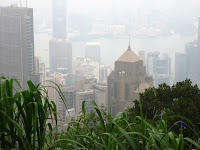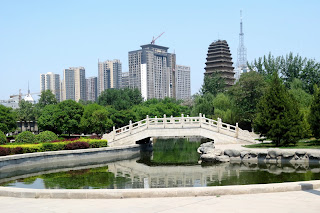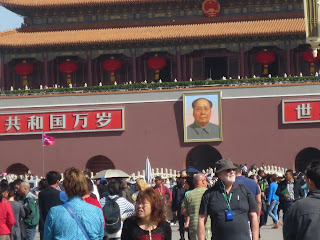 Biscotti are Italian--right? So why is a Ukrainian-American girl putting a recipe for biscotti on her blog?
Well, I love chocolate especially if it is combined with hazelnuts. This recipe is from Giada De Laurentis and the Food Network. I made it and loved them, especially since this recipe avoids the biggest problem in making biscotti, slicing them after they are baked. These biscotti come in a round cookie format, which is easy to make and dunk in your coffee. Best of all, they contain Nutella!
Biscotti are Italian--right? So why is a Ukrainian-American girl putting a recipe for biscotti on her blog?
Well, I love chocolate especially if it is combined with hazelnuts. This recipe is from Giada De Laurentis and the Food Network. I made it and loved them, especially since this recipe avoids the biggest problem in making biscotti, slicing them after they are baked. These biscotti come in a round cookie format, which is easy to make and dunk in your coffee. Best of all, they contain Nutella!
Chocolate Hazelnut Biscotti
Makes 36 cookies.
Preheat oven to 375 degrees F.
Ingredients
1 1/3 cups all purpose flour (I use unbleached flour)
1/2 tsp baking powder
1/2 tsp baking soda
1/4 tsp kosher salt
1/2 cup butter, softened ( use unsalted butter)
1/2 cup chocolate hazelnut spread ( Nutella recommended)
1/2 cup sugar
1/2 cup brown sugar
1 egg
1 tsp vanilla extract
3/4 cup chopped and toasted hazelnuts (be careful when you toast the hazelnuts, you don't want to burn them)
Directions
1. In a medium bowl, combine the flour, baking powder, baking soda and salt. Set aside.
2. In another medium bowl, combine the butter, chocolate hazelnut spread, sugar, and brown sugar
3. Using an electric mixer, cream the ingredients together, about 4 minutes.
4. Add the egg and vanilla and beat until smooth, about 1 minute.
5. Using a wooden spoon or rubber spatula, stir in the flour mixture until just combined.
6. Add the hazelnuts and stir until just combined.
Cover the cookie sheet with parchment paper.
Using a tablespoon measure, spoon out the cookie dough onto a cookie sheet, spacing the dough about 4 inches apart.
Use the tines of a fork to flatten the cookie dough.
Bake until golden around the edges, about 10-12 minutes.
Use a metal spatula to transfer the cookies to a wire rack to cool.
Notes: Nutella is available in most grocery stores.














































